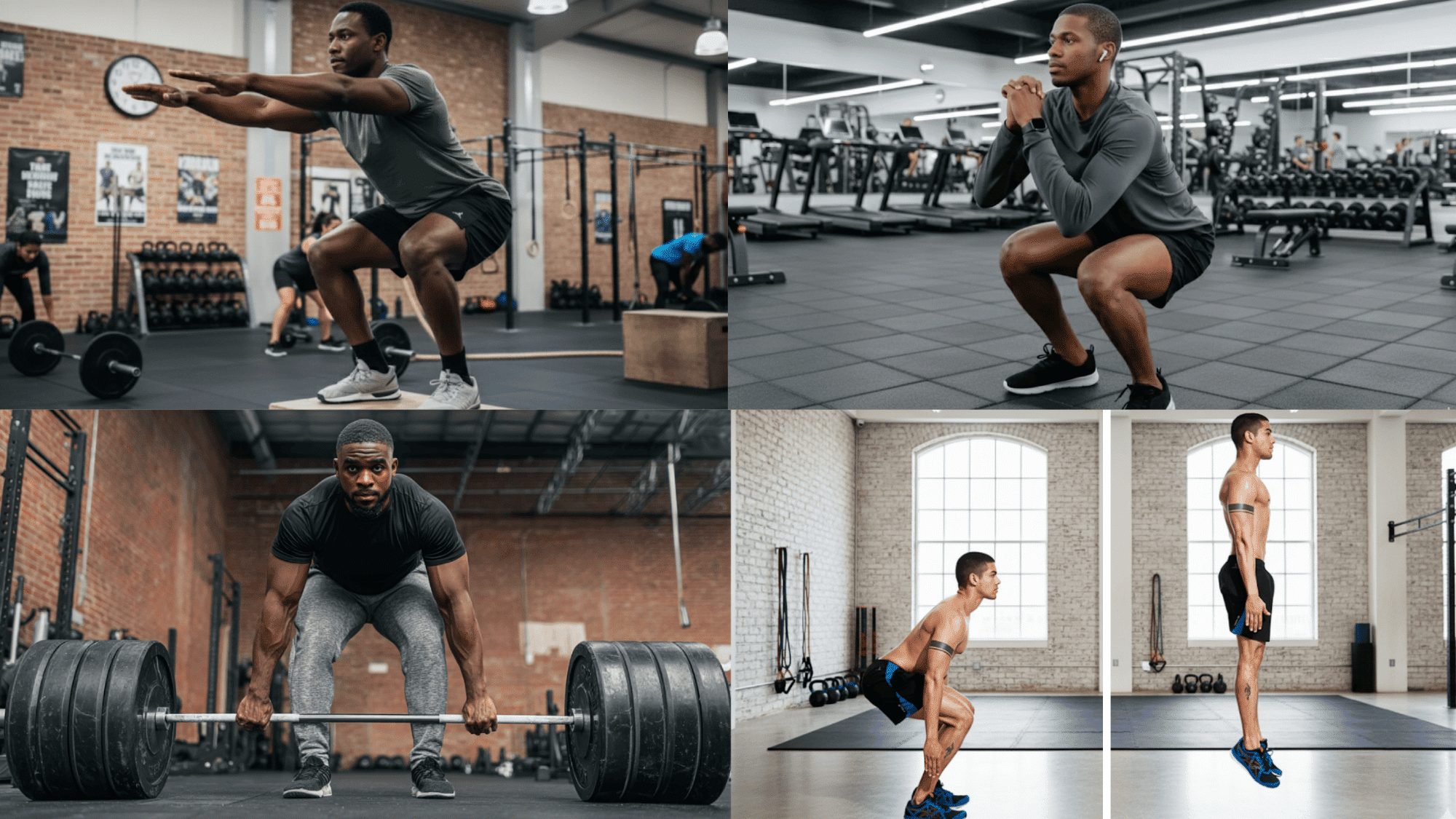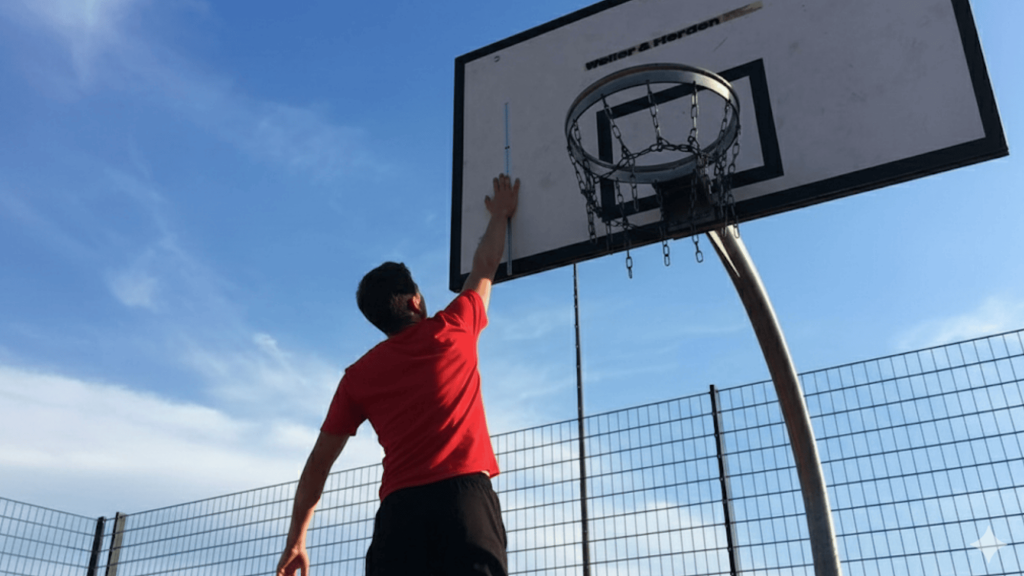Want to know how to jump higher and dominate the basketball court? Whether it’s going up for rebounds, blocking shots, or finally throwing down that dunk, a higher vertical jump can change your game.
The best part? Improving your jump isn’t just about genetics; it’s about smart training, technique, and consistency.
In this blog, you will learn everything from strength and plyometric exercises to proper form and recovery habits, so you can maximize your jumping ability.
Get ready to add power, explosiveness, and confidence every time your feet leave the ground.
Understanding Vertical Jump Mechanics
Before exploring how to jump higher, it’s important to understand what makes a great jump. Your vertical leap depends on three main factors: leg strength, explosive power, and proper technique.
- Leg strength provides the foundation. The stronger they are, the more force they can generate.
- Explosive power is your ability to use that strength quickly.
- Proper technique ensures you’re using your body efficiently to maximize height.
Most basketball players focus only on strength training, but that’s just one piece of the puzzle. The athletes who see the biggest improvements work on all three elements together.
Essential Exercises to Jump Higher

Now, let’s examine the specific exercises that will enhance your jumping ability and elevate your basketball game to new heights.
1. Box Jumps
This plyometric drill builds lower-body power and trains you to generate force quickly, directly increasing your vertical leap and game performance.
- Start with a 12-18-inch box.
- Jump up explosively, land softly.
- Step down (don’t jump down).
- Do 3 sets of 8-10 reps.
2. Jump Squats
By combining strength and volatility, jump squats help you develop fast-twitch muscles, making every jump quicker, higher, and more controlled.
- Squat down, then explode upward.
- Land softly and immediately repeat.
- Focus on height, not speed.
- Perform 3 sets of 12-15 reps.
3. Depth Jumps
Depth jumps train your body to absorb impact and instantly go off upward, teaching powerful takeoff mechanics for real basketball situations.
- Step off an 18-24 inch box.
- Land and immediately jump as high as possible.
- Advanced move, master box jumps first.
- 3 sets of 5-8 reps.
4. Squats
The king of lower-body exercises, squats build strength in your legs and core, creating the foundation needed for higher, stronger jumps.
- Work up to squatting 1.5x your body weight
- Use a full range of motion
- 3-4 sets of 6-8 reps
5. Deadlifts
Deadlifts target your posterior chain: glutes, hamstrings, and lower back, providing the raw strength and power essential for vertical jumping success.
- Focus on proper form over heavy weight.
- 3 sets of 5-6 reps.
6. Calf Raises
Strong calves give you the extra push at takeoff, ensuring your jumps are smoother, higher, and less taxing on your legs.
- Use both seated and standing variations.
- Higher reps work well (15-20).
- 3-4 sets each variation.
7. Bulgarian Split Squats
This single-leg exercise builds balance, stability, and leg strength, helping you generate more power during takeoff.
- Place your back foot on a bench.
- Lower into a lunge until your front thigh is parallel.
- Push through the front heel to rise.
- 3 sets of 8–10 reps each leg.
8. Hip Thrusts
Hip thrusts strengthen the glutes, a key muscle group for explosive jumping power.
- Sit with your upper back on a bench, barbell across your hips.
- Drive through your heels and lift your hips until your torso is flat.
- Lower slowly, then repeat.
- 3–4 sets of 8–12 reps.
9. Power Cleans
This Olympic lift develops total-body explosiveness, improving your vertical jump and overall athleticism.
- Start with a barbell at shin level.
- Pull explosively, shrug, and catch the bar at shoulder height.
- Focus on speed, not just weight.
- 3–5 sets of 3–5 reps.
10. Lateral Bounds
Improves leg power and stability while training explosiveness in different movement directions—important for basketball’s quick changes.
- Jump explosively sideways from one leg to the other.
- Land softly, balance, then push off again.
- Keep your chest up and core engaged.
- 3 sets of 8–12 bounds each side.
11. Glute-Ham Raises
Targets hamstrings and glutes, supporting stronger, safer jumps while protecting against injury.
- Kneel on a pad with ankles secured.
- Lower your torso slowly forward.
- Pull yourself back up using hamstrings and glutes.
- 3 sets of 6–8 reps.
Technique Tips that Make a Difference

Many players have the strength to jump higher but lack proper technique. Small adjustments can lead to immediate improvements.
Arm Swing Mechanics
Your arms are more important than most people realize when it comes to jumping higher. Start by positioning your arms behind your body, then swing them forward and upward explosively.
The key is to coordinate the arm swing with your leg drive, keeping the motion smooth, powerful, and fully synchronized.
Takeoff Positioning
A strong vertical jump starts with the right takeoff technique. Land on the balls of your feet instead of being flat-footed.
Keep your knees slightly bent for control, and drive through your heels as you push upward. Good posture throughout the movement ensures maximum height and reduces the risk of injury.
The Countermovement
The countermovement is the quick dip that precedes an explosive upward movement, much like compressing a spring before release. Drop down fast, but avoid going too deep; about a quarter squat works best.
Immediately reverse direction into the jump. The quicker and sharper the reversal, the higher and more explosive your vertical jump will be.
Weekly Training Plan
Here’s a simple 4-day structure you can follow:
| Day | Focus | Example Exercises |
|---|---|---|
| Monday | Strength | Squats, lunges, deadlifts |
| Tuesday | Plyometrics | Box jumps, depth jumps |
| Thursday | Strength | Step-ups, split squats |
| Saturday | Mixed | Core, mobility, jump technique drills |
Keep sessions short (45–60 minutes) but focused. Use the alternative days as rest days.
Common Mistakes to Avoid
Even dedicated athletes make these errors that limit their jumping potential:
- Overtraining without rest days
- Neglecting core strength and mobility
- Using sloppy form on jumps
- Skipping warm-ups and cooldowns
- Expecting instant results instead of steady improvement
Remember, progress comes from patience, smart training, and consistency. Avoid these mistakes, stay disciplined, and you’ll see your vertical jump improve steadily over time.
Nutrition and Recovery Factors
Your training is only as good as your recovery. Proper nutrition and rest are crucial for improvement. Protein intake should be around 0.8-1 gram per pound of body weight. This helps rebuild muscle tissue after tough workouts.
Sleep quality has a direct impact on your athletic performance. Aim for 7-9 hours per night, especially after intense training sessions. Hydration impacts every aspect of performance. Drink water throughout the day, not just during workouts.
Tracking Your Progress
Measuring improvement keeps you motivated and helps adjust your training. Test your vertical jump every 2-3 weeks using these methods:
- Wall Touch Test: Mark your standing reach, then your jumping reach.
- Basketball Rim: Try to touch progressively higher parts, such as the rim.
- Vertical Jump App: Many smartphone apps can accurately measure jump height.
Record your numbers and celebrate even the smallest improvements. Adding even 2-3 inches to your vertical jump makes a noticeable difference on the court.
At the End
Jumping higher in basketball isn’t about luck; it’s about building the right habits. Strength training builds a foundation, plyometrics boost explosiveness, and correct technique ensures efficient power use.
Add in recovery, good nutrition, and consistent practice, and you’ll see steady improvements over time.
Even small gains of 2–3 inches can completely change how you play; suddenly, rebounds, blocks, and dunks feel within reach.
The pathway may take patience, but each session brings you closer to becoming a more confident and better player.
Continue training smart, stay disciplined, and savor the progress you make.





































